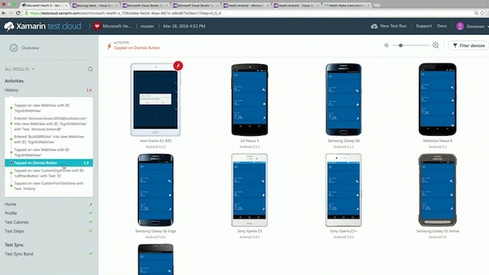A demo of Xamarin tools, which enable developers to build fully native mobile apps to run across iOS, Android, Windows, and Mac platforms using a single code base, was among the highlights of the second-day keynote at Build 2016. The lengthy keynote also brought updates on Azure, Power BI, and Office.


10 Windows 10 Hacks To Maximize Your Experience
10 Windows 10 Hacks To Maximize Your Experience (Click image for larger view and slideshow.)
Cloud and productivity were the main keynote themes on the second day of Microsoft's Build 2016 conference in San Francisco, March 31. Demos of tools from Xamarin, a mobile development company recently acquired by Microsoft, and a series of Office updates for developers were the highlights of the presentations.
Microsoft announced that it's integrating Xamarin into Visual Studio for free to users of all Visual Studio editions: Enterprise, Professional, and Community. It's also making the Xamarin runtime open source, meaning .NET will be fully open source and available on any device.
Office-specific updates for the developer crowd included: improvements to Office Graph for building business apps, a simpler means of adding to Office apps, deployment of ribbons and buttons, and extensibility tools for Skype and Office 365 groups.
Scott Guthrie, EVP of the company's Cloud + Enterprise division, kicked off the lengthy keynote, which also brought updates on Azure, Power BI, and Office 365, among other technologies.
Guthrie began by illustrating the growth of Azure, which he said garners more than 120,000 new subscriptions per month. More than 1.4 million SQL databases are hosted in Azure, he said, and more than 2 trillion IoT messages are processed by Azure IoT each week.

Learn to integrate the cloud into legacy systems and new initiatives. Attend the Cloud Connect Track at Interop Las Vegas, May 2-6. Register now!
The first day of Build started with news related to Windows 10, Skype, artificial intelligence, machine learning, Cortana, HoloLens, Xbox, and demonstrating the value of Windows for developers. Here's a closer look at two key topics addressed in the second-day keynotes:
Xamarin demos
To give the first demo of the day, Guthrie called on Miguel de Icaza, cofounder of Xamarin. The company's tools enable developers to build fully native mobile apps to run across iOS, Android, Windows, and Mac platforms using a single code base. It was already a Microsoft partner, and had created tools to work with Visual Studio, Office 365 and Azure, prior to being acquired.
Xamarin's de Icaza demonstrated the process of creating iOS and Android apps using Microsoft's Visual Studio. He showed how developers can code an app in C# on a Mac running the iOS simulator in Visual Studio, while being remotely controlled on Windows. He noted the simulator will support multitouch, which is not possible on Mac OS X.
De Icaza also showed how an Android app can be tested in the Android emulator in Xamarin. He used the Xamarin Inspector tool to test code and run it live. The Xamarin Test Cloud lets developers test code across devices, and the Test Recorder lets them record tests, drill down into specific problems, and save test videos.
Office updates for developers
Qi Lu, Microsoft's EVP of apps and services, highlighted the Office-specific updates designed for developers.
Microsoft is extending the capabilities of the Microsoft Graph, which developers can use to bring data from Microsoft services into their own apps. Developers can now use the Graph to retrieve user data such as email attachments, and can use new APIs to return relevant documents and meeting time suggestions.
[Office 365 and Slack are gaining enterprise users, research finds.]
The team is boosting the responsiveness of apps that use Office data by providing notifications via Office Graph for changes made to users' contacts, mail, and calendar.
Add-ins are coming to Office for Mac, along with centralized deployment and the creation of ribbons and buttons specific to company needs. Starbucks CTO Gerri Martin-Flickinger took to the stage to show how a new Starbucks add-in for Office works. Customers will have the option to send Starbucks gifts in Outlook, as well as schedule meetings at nearby cafes.
In an effort to make conversations more intelligent, Microsoft is announcing a new Skype for Web SDK, Skype for Business App SDK, and Office 365 Group Connectors.
The Skype SDK updates are part of a broader initiative to combine cloud voice, meeting, and messaging with APIs and SDKs across a range of Web and device platforms. They enable companies to give customers the option of chatting with experts using Skype via mobile app. For example, MDLIVE is letting doctors and patients chat using a mobile app powered by Skype.
Developers can use Office 365 Groups connectors, also available today, to push data from their apps into an Office 365 Groups chat using Outlook. This will let enterprise users interact with external data using a service that's already familiar to them.

About the Author(s)
You May Also Like







